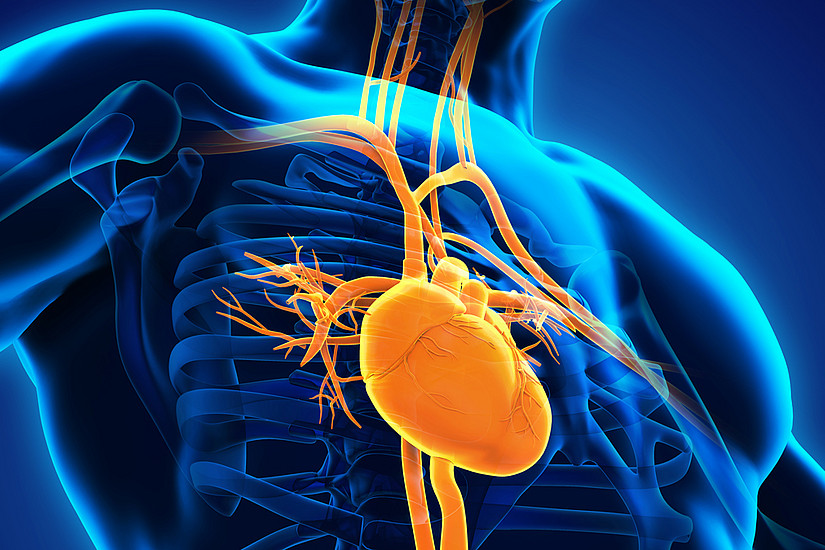In metabolic disorders such as type II diabetes and obesity, fat is increasingly stored in the organs. As a result, the heart muscle is often damaged and its function impaired. Guenter Haemmerle from the BioHealth research group at the University of Graz and his team are investigating the molecular mechanisms of lipid metabolism in the heart. In the course of their research, they discovered that too much fat in the heart is not necessarily a problem, as long as it is stored “properly” to serve as an energy supply when needed. The bioscientists published their findings, which are relevant with regard to therapeutic measures for metabolic disorders, in the journal “Cardiovascular Research”.
In the latest study, Stephanie Kolleritsch from Guenter Haemmerle's research group investigated mice that produced too much of Perilipin 5 (PLIN5) in the heart due to a genetic alteration. "Overexpression of PLIN5 in the heart muscle inhibits fat catabolism, which led to massive fatty deposition in the heart of our mice", reports Haemmerle. What surprised the researchers: the organ continued to function normally anyway. “Although the heart muscle became thicker, the volume of the heart chamber increased at the same time. The mice suffered no functional restriction, nor was their lifespan shortened. This suggests that cardiac insufficiency resulting from obesity and type II diabetes is not caused by fat stored in the form of triglycerides, but rather by toxic products from increased fat catabolism”, says the molecular biologist. These new findings confirm those of previous studies.
When too many fatty acids enter the heart through the intake of food, the metabolic system reaches its limits and starts to make mistakes. Some of the fatty acids are not completely oxidised and have to be deposited within lipids such as triglycerides and ceramides. “Ceramides and a surplus of free fatty acids can be toxic and damage mitochondria, which are responsible for energy production”, explains Haemmerle. Inhibiting fat catabolism saved the mice in the Graz study from these negative effects.
Yet another connection could be relevant for the heart’s functioning: “By limiting the reduction of fat, the organ has to switch to glucose utilization for energy production. This is more energy-efficient – and better for the heart”, adds the bioscientist.
The new findings contribute significantly to our understanding of fat and energy metabolism in the heart and can therefore also be of interest for new therapy options.
Publication
Low cardiac lipolysis reduces mitochondrial fission and prevents lipotoxic heart dysfunction in Perilipin 5 mutant mice
Stephanie Kolleritsch, Benedikt Kien, Gabriele Schoiswohl, Clemens Diwoky, Renate Schreiber, Christoph Heier, Lisa Katharina Maresch, Martina Schweiger, Thomas O. Eichmann, Sarah Stryeck, Petra Krenn, Tamara Tomin, Dagmar Kolb, Thomas Rülicke, Gerald Hoefler, Heimo Wolinski, Tobias Madl, Ruth Birner-Gruenberger, Guenter Haemmerle
Cardiovasc Res. 2019 May 6
DOI: 10.1093/cvr/cvz119




